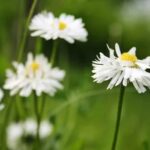Are you looking to spruce up your outdoor space with some greenery and blooming flowers? If so, yard gardening might be the perfect solution for you. In this article, we will explore various yard gardening ideas to help you create a beautiful and thriving garden in your yard. Whether you have a small patio or a spacious backyard, yard gardening offers endless possibilities for designing a unique and personalized outdoor oasis.
Yard gardening involves cultivating plants, flowers, and vegetables in an outdoor space surrounding your home. This can include anything from simple flower beds to elaborate vegetable gardens.
The key is to tailor your garden to suit your personal preferences while taking into consideration the specific characteristics of your yard such as sunlight exposure, soil type, and climate. By incorporating creative layout and design elements along with sustainable practices, yard gardening is not only aesthetically pleasing but also beneficial for the environment.
When it comes to enhancing your outdoor space through gardening, choosing the right plants is essential. The selection process should consider factors like climate suitability, sunlight requirements, and soil quality. With the right knowledge and preparation, you can easily transform your yard into a vibrant and flourishing garden. Stay tuned as we delve deeper into selecting suitable plants for your garden and how to maximize the use of available space efficiently.
Choosing the Right Plants
When it comes to yard gardening, choosing the right plants is essential for the success and beauty of your outdoor space. Whether you have a small backyard or a spacious lawn, selecting the best plants for your yard garden involves careful consideration of various factors such as climate, sunlight, and soil quality. Here are some tips to help you choose the right plants for your yard garden:
1. Consider Climate: Before selecting any plants for your yard garden, it’s important to consider the climate of your region. Different plants thrive in different climates, so be sure to choose varieties that are well-suited to your local weather conditions. You can research which plants are native to your area and will therefore require less maintenance.
2. Assess Sunlight Levels: Another crucial factor to consider when choosing plants for your yard garden is the amount of sunlight they will receive. Some plants thrive in full sun, while others prefer partial shade or full shade. Take note of how much direct sunlight each area of your yard receives throughout the day and select plants accordingly.
3. Evaluate Soil Quality: The type and quality of soil in your yard can greatly impact the success of your garden. Before planting anything, it’s a good idea to test the pH levels and nutrient content of your soil. Based on these results, you can choose plants that are well-suited to the specific soil conditions in your yard.
By carefully considering these factors, you can ensure that you select the best plants for your yard garden that will thrive in their environment and contribute to a beautiful and flourishing outdoor space that you’ll be proud of. Whether you opt for perennial flowers, shrubs, or vegetables, taking these considerations into account will set you on the path toward successful yard gardening ideas.
Creative Layout and Design
When it comes to yard gardening, the layout and design of your garden play a crucial role in maximizing space utilization and creating an aesthetically pleasing outdoor environment. Whether you have a small urban yard or a spacious suburban garden, careful planning and creative design can transform your outdoor space into a thriving green oasis.
One of the key yard gardening ideas for optimal space utilization is to incorporate vertical gardening techniques. This includes using trellises, wall-mounted planters, and hanging baskets to grow plants vertically, thus making the most of limited horizontal space. Additionally, organizing your garden into distinct zones for planting, relaxation, and entertainment can help create an inviting and functional outdoor living area.
In terms of aesthetic appeal, consider incorporating a mix of colors, textures, and heights in your garden design. This can be achieved by selecting a diverse range of plants that offer visual interest throughout the year. Grouping plants with varying heights and foliage types can add depth and dimension to your garden, while incorporating elements such as pathway lighting, decorative containers, and water features can enhance the overall ambiance.
| Yard Gardening Design Element | Benefit |
|---|---|
| Vertical Gardening Techniques | Maximizes space utilization |
| Diverse Plant Selection | Enhances visual interest |
| Zoning for Different Functions | Creates an inviting outdoor living area |
By implementing these creative layout and design strategies in your yard garden, you can create a beautiful and functional outdoor space that enriches your home environment while nurturing plant life.
DIY Garden Projects
Yard gardening offers a fantastic opportunity to get creative and hands-on with various do-it-yourself (DIY) projects that can enhance both the aesthetic appeal and functionality of your outdoor space. From building raised beds to installing a trellis and creating a compost bin, there are numerous fun and practical projects that can take your yard garden to the next level.
When it comes to building raised beds for your yard garden, there are endless possibilities in terms of design, materials, and size. You can opt for traditional wooden frames or get creative with recycled materials such as old tires or pallets. Raised beds not only provide better soil drainage but also make it easier to maintain and harvest your plants.
Installing a trellis in your yard garden is another great DIY project that can help maximize vertical space and support climbing plants such as tomatoes, cucumbers, squash, and peas. Trellises come in various styles and materials, allowing you to choose one that complements the overall design of your yard garden while serving a practical purpose.
Creating a compost bin is an essential project for any yard gardener looking to practice sustainable gardening. Composting kitchen scraps and yard waste not only reduces the amount of organic material sent to landfills but also produces nutrient-rich compost that can be used to enrich the soil in your yard garden. Whether you opt for a simple wire mesh bin or a more elaborate wooden structure, having a designated composting area will benefit both your garden and the environment.
| DIY Garden Project | Description |
|---|---|
| Raised Beds | Building raised beds using traditional wooden frames or recycled materials allows for better soil drainage and easier maintenance. |
| Trellis Installation | Installing a trellis helps maximize vertical space in the garden while providing support for climbing plants. |
| Compost Bin Creation | Creating a compost bin from either wire mesh or wood allows for sustainable disposal of organic waste while producing nutrient-rich compost for the garden. |
Seasonal Planting Guide
Spring Planting
In the spring, yard gardeners have the opportunity to plant a wide variety of fruits, vegetables, and flowers. It is important to start preparing the soil in early spring by removing debris and adding compost or fertilizer to ensure that the plants have the nutrients they need to thrive.
Some popular vegetables to plant in the spring include tomatoes, peppers, and cucumbers, while strawberries and raspberries are great options for fruit-bearing plants. Additionally, flowering plants such as tulips and daffodils can add a pop of color to your yard garden.
Summer Care
Once summer arrives, it is crucial to pay attention to watering and maintaining your yard garden. With the increase in temperature, plants may require more frequent watering to prevent them from drying out. In addition to watering, it is essential to keep an eye out for pests and diseases that may affect your plants during the warmer months. Using organic pest control methods can help protect your yard garden without harming the environment.
Fall Harvest and Preparation
As summer transitions into fall, yard gardeners can look forward to harvesting their crops and preparing their garden for the colder months ahead. Depending on the climate, some vegetables such as kale, carrots, and broccoli can thrive during this time of year.
Additionally, it is important to start cleaning up the yard garden by removing dead plants and adding mulch to protect against frost in preparation for winter. This is also a great time to plan and plant cover crops that will enrich the soil over the winter months.
By following this seasonal planting guide for your yard gardening ideas throughout spring, summer, fall, and winter you can ensure that your yard garden continues to flourish all year long with proper care and maintenance no matter what season you are facing.
Pest and Disease Management
One of the biggest challenges that yard gardeners face is dealing with pests and diseases that can damage or even kill plants. It’s important to have a solid strategy in place for preventing and treating these issues in order to maintain a healthy and thriving yard garden. Here are some effective strategies for managing common pests and diseases:
1. Regular Inspection: Make it a habit to inspect your yard garden regularly for any signs of pest infestations or disease outbreaks. Look for chewed leaves, yellowing or wilting plants, or unusual spots on the foliage. Catching problems early can make a big difference in how effectively they can be managed.
2. Natural Predators: Encourage beneficial insects and animals that prey on garden pests to make their home in your yard garden. Ladybugs, lacewings, and birds can help keep pest populations in check without the need for harmful chemical pesticides.
3. Organic Pest Control: When pest problems arise, opt for organic pest control methods whenever possible. Homemade sprays using ingredients like neem oil, garlic, or hot pepper can be effective at repelling many types of pests without harming beneficial insects or the environment.
4. Disease-Resistant Plants: Choose plant varieties that are known to be resistant to common diseases in your area. This proactive approach can significantly reduce the risk of widespread disease outbreaks in your yard garden.
5. Proper Hygiene: Keep your yard garden clean and tidy by removing dead plant material, fallen leaves, and other debris where pests and diseases can harbor. This simple practice can help prevent problems before they start.
By implementing these strategies for preventing and treating common pests and diseases, you can enjoy a beautiful and thriving yard garden throughout the growing season.
Sustainability and Eco-Friendly Practices
Water Conservation
One of the key aspects of sustainable gardening is water conservation. In yard gardening, it’s important to minimize water usage by implementing practices such as drip irrigation, mulching, and collecting rainwater. Drip irrigation systems deliver water directly to the base of plants, minimizing evaporation and water waste. Mulching helps retain moisture in the soil, reducing the need for frequent watering. Additionally, collecting rainwater in barrels can provide a free and eco-friendly source of water for your yard garden.
Organic Pest Control
Another important aspect of sustainable yard gardening is the use of organic pest control methods. Instead of relying on chemical pesticides that can harm beneficial insects and pollute the environment, consider using natural alternatives such as neem oil, insecticidal soaps, and companion planting. These methods can help control pests while minimizing harm to the ecosystem.
Eco-Friendly Garden Materials
When planning and designing your yard garden, consider using eco-friendly materials such as recycled wood for raised beds, untreated natural stone for pathways, and sustainable bamboo for trellises. Using these materials not only reduces environmental impact but also adds a unique and natural aesthetic to your garden space.
By incorporating these sustainability practices into your yard gardening endeavors, you can create a beautiful and productive garden while minimizing your environmental footprint. These eco-friendly approaches not only benefit the planet but also contribute to a healthier and more vibrant outdoor space for you to enjoy.
Success Stories and Inspiration
In conclusion, yard gardening is a fantastic way to transform your outdoor space into a beautiful and productive garden that you can enjoy all year round. By carefully choosing the right plants for your climate and soil conditions, creatively designing your garden layout, and implementing sustainable and eco-friendly practices, you can create a thriving oasis right in your own backyard.
With a little bit of planning and creativity, you can turn your yard into a flourishing garden that not only enhances the beauty of your home but also provides fresh produce and flowers for you to enjoy.
One great aspect of yard gardening is the opportunity for DIY projects that add both functionality and charm to your garden. From building raised beds to creating compost bins and installing trellises, there’s no shortage of fun and practical projects to enhance your yard garden. These projects not only add visual interest but also contribute to the health and productivity of your plants.
Furthermore, by learning about seasonal planting guides and strategies for pest and disease management, you can ensure that your yard garden remains healthy and vibrant throughout the year. And with inspiration from real-life success stories as well as creative yard gardening ideas, there are countless possibilities for turning your outdoor space into a stunning and fruitful sanctuary through yard gardening ideas.
Whether you’re a seasoned gardener or just starting out, there’s always something new to try in the world of yard gardening.

Welcome to my gardening blog! I am passionate about plants and enjoy sharing my knowledge and experiences with others. In this blog, I will write about everything related to gardening, from tips on how to get started to updates on my own garden projects.





